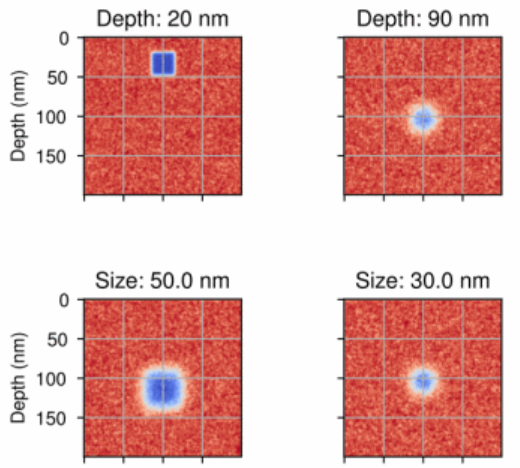Scanning Probe Microscopy
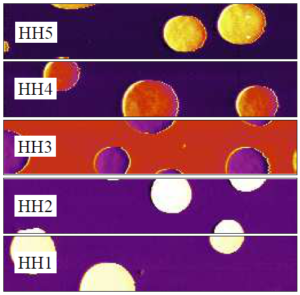
Probe Based Lithography
Probe based lithography involves creating nanometer sized features from photoresist and metal on conducting and semiconducting substrates. Near field optical, electrical and thermal fields are employed in combination with evaporation, etching and electroplating to provide high-speed alternatives for mask-less nanofabrication.
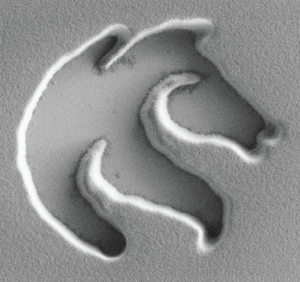
Nanopositioning
A nanopositioner is a electromechanical device for moving objects in three dimensions with atomic, or sub-atomic resolution. Nanopositioners are employed in applications such as imaging, fabrication and optics. This field encompasses mechanical design, sensor design, and control theory. More details.
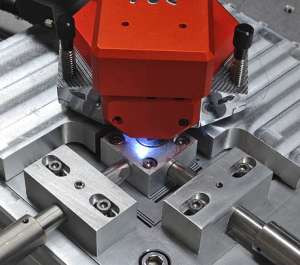
Electroactive Optics
Piezoelectric actuators can be combined with mirrors, lenses and objectives to actively control the path and properties of an optical field or laser beam. High speed electro-optics are required for precision lasers, maskless lithography, and microscopy.
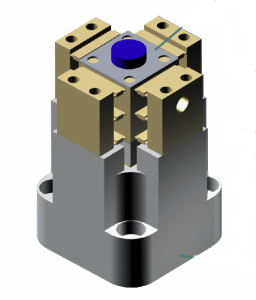
Precision Sensors
This project aims to study the fundamental limitations of capacitive, optical and magnetic position sensors. New techniques are under development to provide sub-atomic resolution over extremely wide bandwidth.

Biomedical Devices
An endoscopic pill robot is being developed for noninvasive imaging and intervention. The robot can be swallowed and includes power transmission, 6-Dimensional localization, and locomotion.
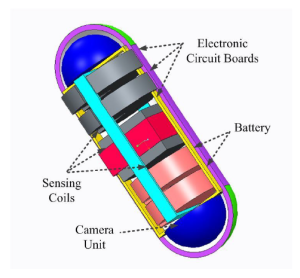
Piezo Actuators and Amplifiers

Piezo bender actuator with integrated 200V power electronics
Piezo Robotics
Due to their compact size and high efficiency, piezoelectric actuators are ideal for micro-actuation in bio-inspired robotics. This project is developing actuators and mechanics for a piezoelectric dragon-fly robot.
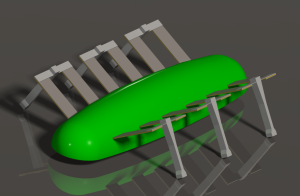
Y. K. Yong N. L. Mai, T. A. Hoang
Fabrication of Microneedles by Pulsating In Situ Dried Electrostretching for Transdermal Drug Delivery Journal Article
In: Small Methods, 2025.
@article{Mai2025,
title = {Fabrication of Microneedles by Pulsating In Situ Dried Electrostretching for Transdermal Drug Delivery},
author = {N. L. Mai, Y. K. Yong, T. A. Hoang, T. H. Vu, H Vu, V. C. Doan, D. Cai, T. X. Dinh, D. V. Dao, V. T. Dau},
doi = {https://doi.org/10.1002/smtd.202500183},
year = {2025},
date = {2025-05-07},
urldate = {2025-05-07},
journal = {Small Methods},
abstract = {This paper introduces a novel pulsating in situ dried electrostretching (PIDES) technique for the fabrication of microneedles (MNs) for transdermal drug delivery. This method utilizes pulsed voltage to induce electrohydrodynamic forces that stretch and freeze a polymer droplet into a conical shape with a micrometer-scale tip. With the effects of solvent evaporation, the polymeric droplet is in situ stretched into a conical shape and solidified, transforming into a sharp MN, suitable for transdermal drug administration. Penetration and mechanical tests confirm that the MNs possess sufficient sharpness and strength for effective skin penetration applications. Additionally, curcumin loading and in vitro release tests with different concentrations demonstrate the MNs' ability to carry drugs and exhibit effective controlled release profiles. These findings highlight PIDES as a promising, low-cost, and simple approach for the development of painless and efficient transdermal drug delivery systems.},
keywords = {},
pubstate = {published},
tppubtype = {article}
}
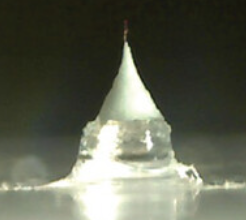
Ruppert, M. G.; Routley, B. S.; McCourt, L. R.; Yong, Y. K.; Fleming, A. J.
Modulated-Illumination Intermittent-Contact Tip-Enhanced Raman Spectroscopy Journal Article
In: ACS Nano Letters, vol. 25, iss. 14, pp. 5656-5662, 2025, ISSN: 1530-6984.
@article{Ruppert2025,
title = {Modulated-Illumination Intermittent-Contact Tip-Enhanced Raman Spectroscopy},
author = {M. G. Ruppert and B. S. Routley and L. R. McCourt and Y. K. Yong and A. J. Fleming},
url = {https://www.precisionmechatronicslab.com/wp-content/uploads/2025/05/Article.pdf},
doi = {https://doi.org/10.1021/acs.nanolett.4c06397},
issn = {1530-6984},
year = {2025},
date = {2025-03-13},
urldate = {2025-03-13},
journal = {ACS Nano Letters},
volume = {25},
issue = {14},
pages = {5656-5662},
abstract = {This article presents a proof-of-concept for a new imaging method that combines tip-enhanced Raman spectroscopy with intermittent-contact atomic force microscopy to provide simultaneous nanometer-scale mechanical imaging with chemical contrast. The foremost difference from a standard tip-enhanced Raman microscope is the Raman illumination, which is modulated by the cantilever drive signal so that illumination is only active when the tip is close to the surface. This approach significantly reduces contact forces and thermal damage due to constant illumination while simultaneously reducing background Raman signals. Near-field optical and dynamic cantilever simulations highlight the effect of the imaging parameters on the tip–sample force and the evanescent field enhancement. The experimental images obtained with this new imaging method demonstrate a lateral resolution sufficient to identify single-walled carbon nanotube bundles with a full width at half-maximum of 20 nm.},
keywords = {},
pubstate = {published},
tppubtype = {article}
}
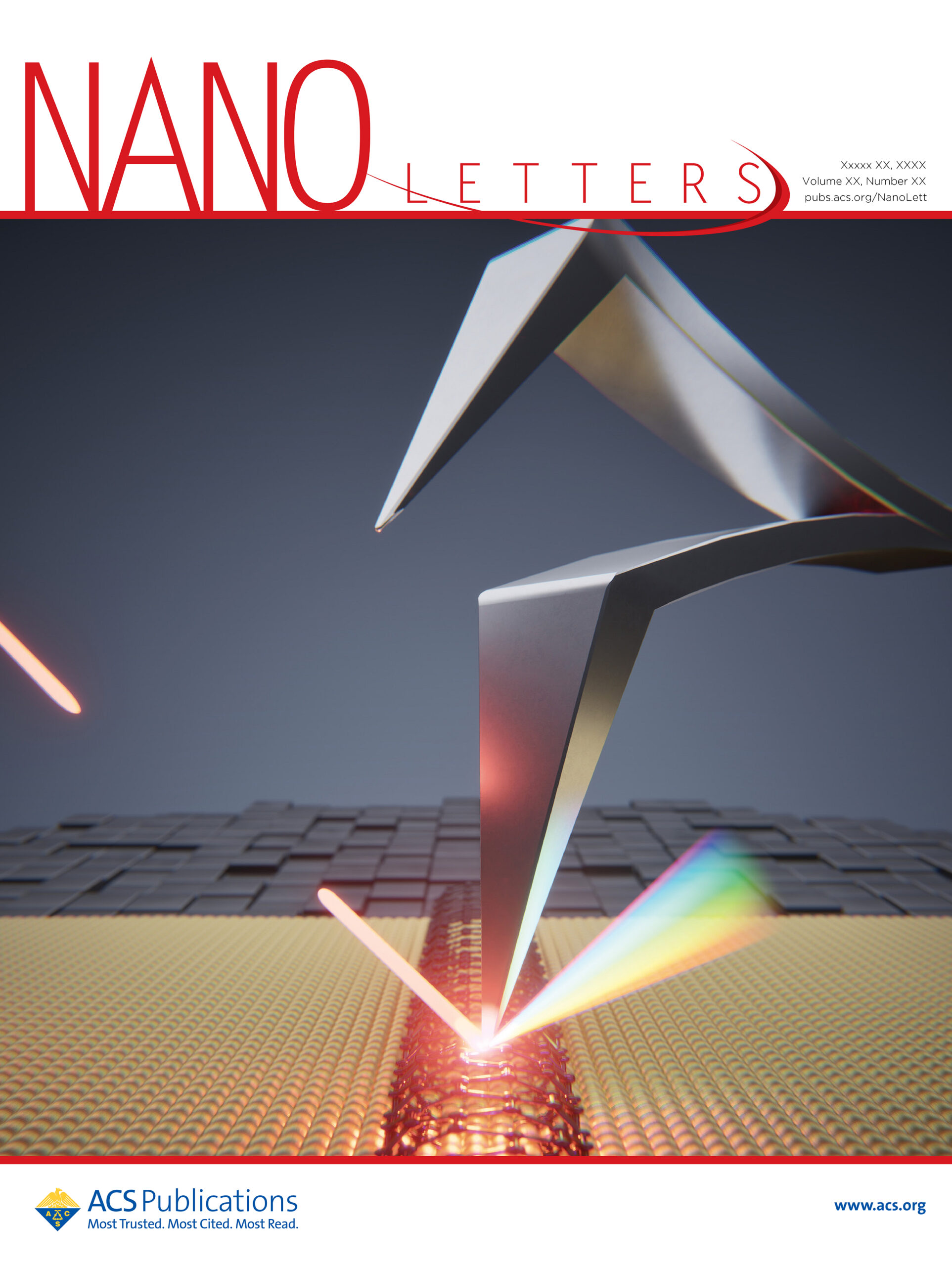
Litman, M.; Azarpeykan, S.; Hood, R. J.; Martin, K.; Pepperall, D.; Omileke, D.; Uzun, O.; Bhatta, D.; Yong, Y. K.; Chan, A.; Hough, N.; Johnson, S.; Bermejo, P. G.; Miteff, F.; Esperon, C. G.; Couch, Y.; Buchan, A. M.; Spratt, N. J.; Korin, N.; Ingber, D. E.; Beard, D. J.
Shear Stress Targeted Delivery of Nitroglycerin to Brain Collaterals Improves Ischaemic Stroke Outcome Working paper
2025.
@workingpaper{nokey,
title = {Shear Stress Targeted Delivery of Nitroglycerin to Brain Collaterals Improves Ischaemic Stroke Outcome},
author = {M. Litman and S. Azarpeykan and R. J. Hood and K. Martin and D. Pepperall and D. Omileke and O. Uzun and D. Bhatta and Y. K. Yong and A. Chan and N. Hough and S. Johnson and P. G. Bermejo and F. Miteff and C. G. Esperon and Y. Couch and A. M. Buchan and N. J. Spratt and N. Korin and D. E. Ingber and D. J. Beard},
url = {https://www.biorxiv.org/content/10.1101/2025.03.25.644833v1.full},
year = {2025},
date = {2025-03-01},
urldate = {2025-04-16},
abstract = {In patients with ischaemic stroke, retrograde perfusion of the penumbra by the leptomeningeal collateral vessels (LMCs) is a strong predictor of clinical outcome, thus raising the possibility that enhancing LMC flow could offer a novel therapeutic approach. Here, using computational modelling we show that LMCs experience elevated fluid shear stress that is significantly higher than that in other blood vessels during ischaemic stroke in animals and humans. We take advantage of this to selectively enhance flow in LMCs using shear-activated nanoparticle aggregates carrying the vasodilator nitroglycerin (NG-NPAs) that specifically release drug in regions of vessels with high shear stress (≥100 dyne/cm2). The NG-NPAs significantly increased LMC-mediated penumbral perfusion, decreased infarct volume, and reduced neurological deficit without altering systemic blood pressure in a rat ischaemic stroke model. The NG-NPAs also did not cause known common side effects of systemic nitrate administration, such as systemic hypotension, cerebral vascular steal, cortical vein dilation, or intracranial pressure elevation. Systemic administration of free NG at the maximal tolerated dose, which was ten times higher than the dose of NG used in the NG-NPAs, did not enhance LMC perfusion and dropped blood pressure. Thus, packaging NG within shear-activated NPAs can potentially enable this widely available vasodilator to become a highly effective therapeutic for ischaemic stroke.},
keywords = {},
pubstate = {published},
tppubtype = {workingpaper}
}
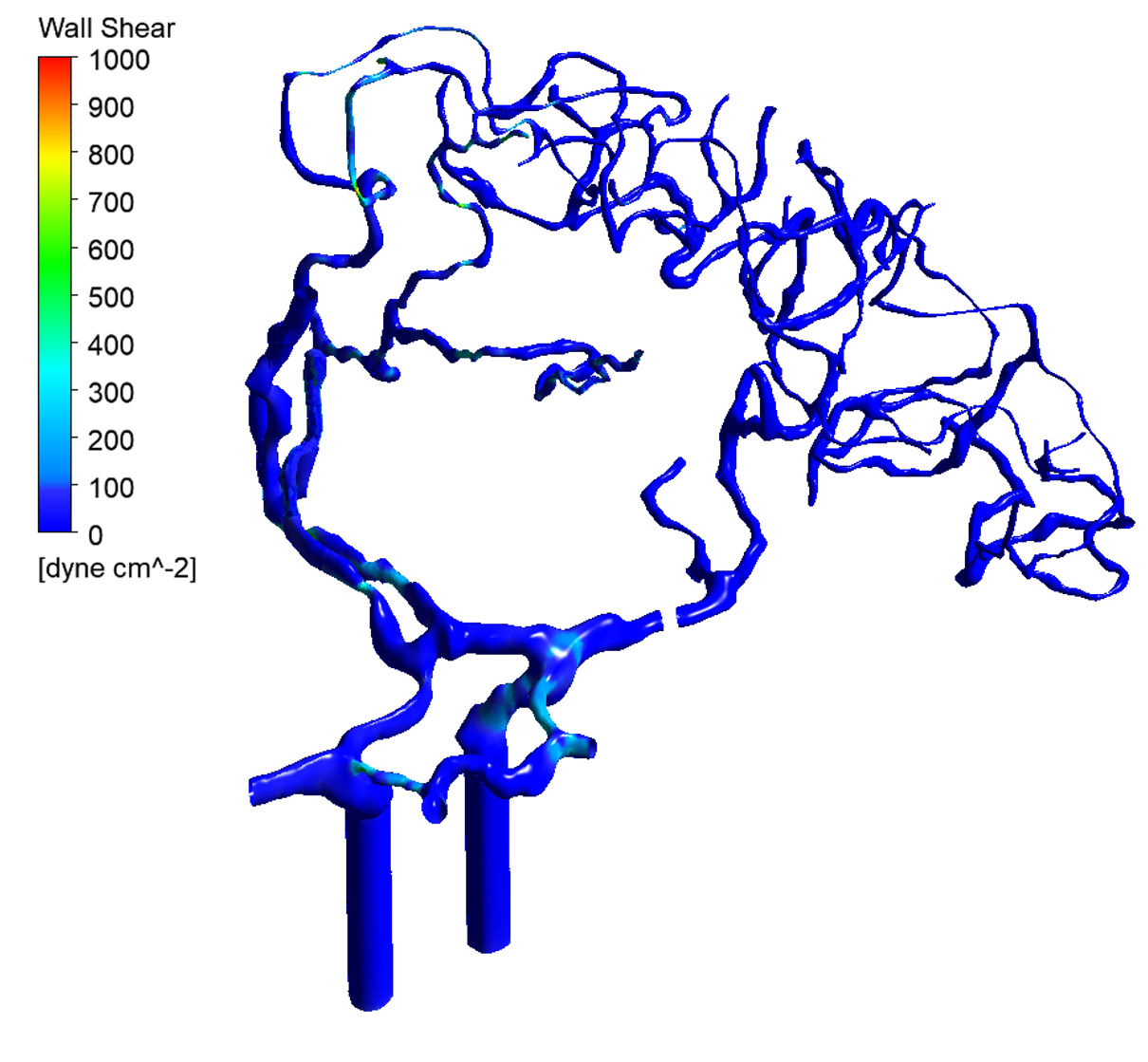
Carlon, C. J.; Yong, Y. K.; Fleming, A. J.
Feasibility of Nano-Acoustic Subsurface Imaging for Atomic Force Microscopy Proceedings Article
In: IEEE International Conference on Mechatronics (ICM), 2025.
@inproceedings{Carlon2025,
title = {Feasibility of Nano-Acoustic Subsurface Imaging for Atomic Force Microscopy},
author = {C. J. Carlon and Y. K. Yong and A. J. Fleming},
url = {https://ieeexplore-ieee-org.ezproxy.newcastle.edu.au/abstract/document/10934819},
doi = {10.1109/ICM62621.2025.10934819},
year = {2025},
date = {2025-02-28},
booktitle = {IEEE International Conference on Mechatronics (ICM)},
abstract = {The feasibility of a new imaging regime for sub-surface Atomic Force Microscopy (AFM) is investigated using synthetic aperture focusing technique. This technique uses two Atomic Force Microscopy (AFM) probes to emit acoustic pulses and sense echoes. Unlike other existing subsurface AFM methods, Nano-Acoustic Subsurface AFM (NASAFM) provides cross-sectional images of a sample below the surface with depth information in the nanometre scale. In order to determine the best resolution, two ideal wideband AFM probes are considered in simulation. The results show that a 20 ps pulse with a bandwidth of 330 GHz was able to resolve two 50 nm discs, 500 nm below the surface, separated by 340 nm. Future work is needed to understand the relation between resolution and bandwidth, the optimal imaging parameters, and the sensing technique.},
keywords = {},
pubstate = {published},
tppubtype = {inproceedings}
}
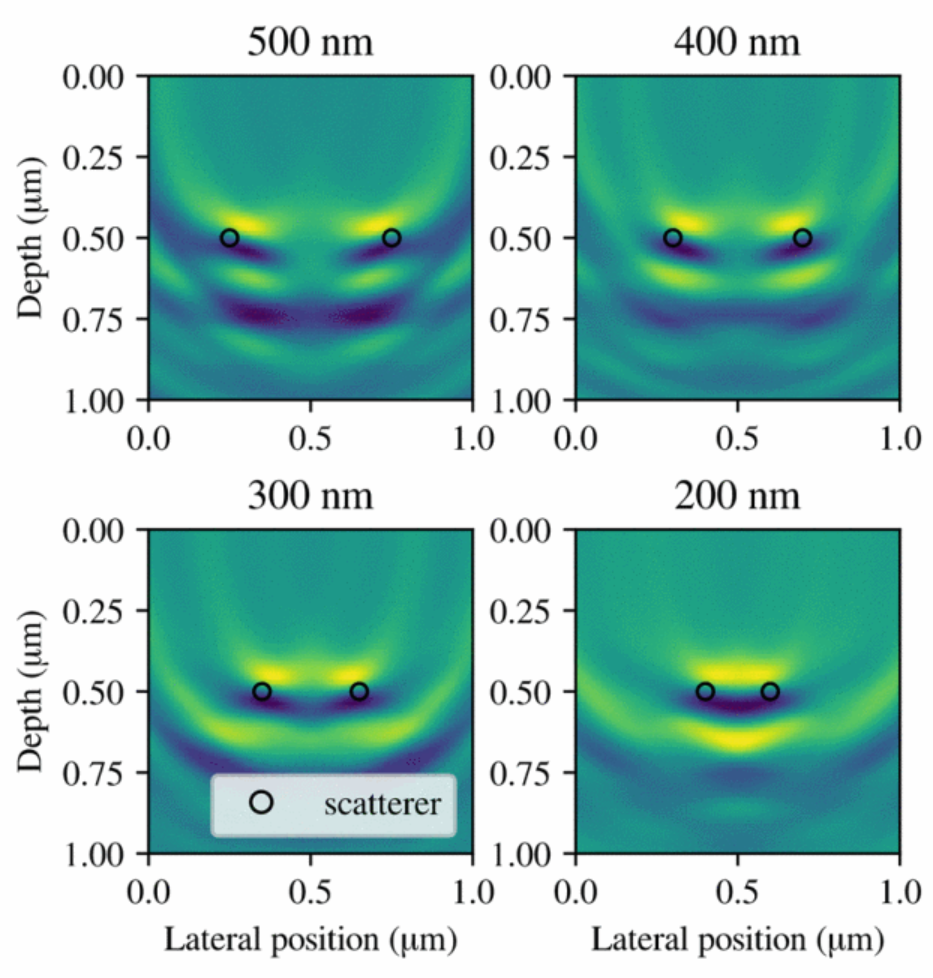
Stanwell, B. J.; Yong, Y. K.; Fleming, A. J.
Feasibility of Nano Electrical Resistive Tomography for Subsurface Atomic Force Microscopy Proceedings Article
In: IEEE International Conference on Mechatronics, 2025.
@inproceedings{Stanwell2025,
title = {Feasibility of Nano Electrical Resistive Tomography for Subsurface Atomic Force Microscopy},
author = {B. J. Stanwell and Y. K. Yong and A. J. Fleming},
url = {https://ieeexplore-ieee-org.ezproxy.newcastle.edu.au/abstract/document/10934851},
doi = {10.1109/ICM62621.2025.10934851},
year = {2025},
date = {2025-02-28},
booktitle = {IEEE International Conference on Mechatronics},
abstract = {This article investigates the feasibility of using a dual-cantilever atomic force microscope for imaging the electrical properties of a sample below the surface. Principles from macro-scale electrical resistive tomography are adapted to utilize measurements from a dual-probe atomic force microscope. A deep-learning method is employed to perform the inversion process and construct the tomography. Simulation results demonstrate that electrical resistive tomography is possible at the nanometre scale but improvements to the inversion algorithms are needed before moving to experimental applications.},
keywords = {},
pubstate = {published},
tppubtype = {inproceedings}
}
